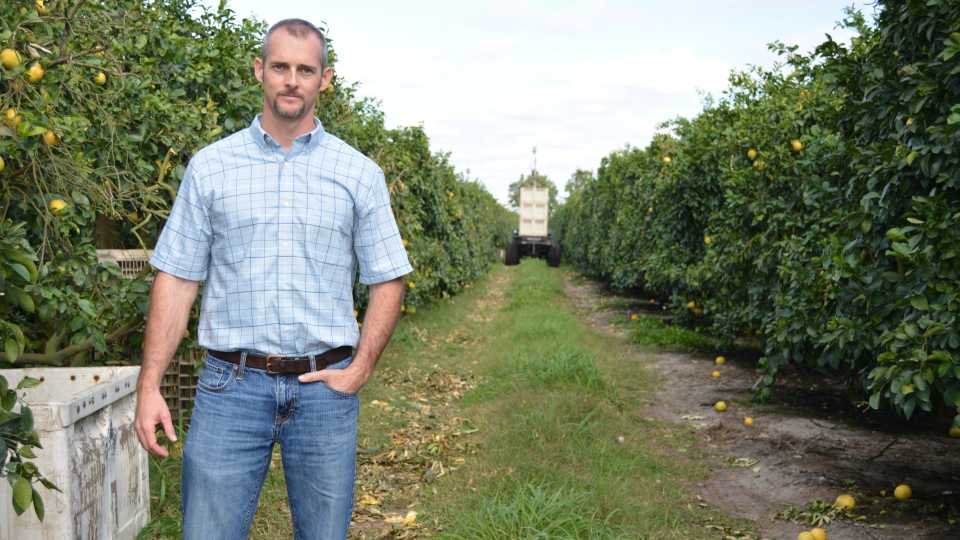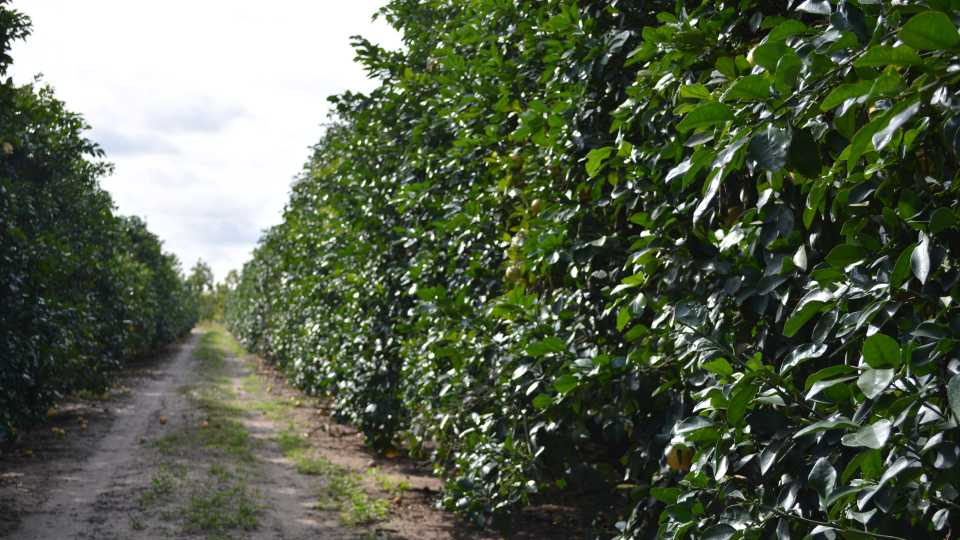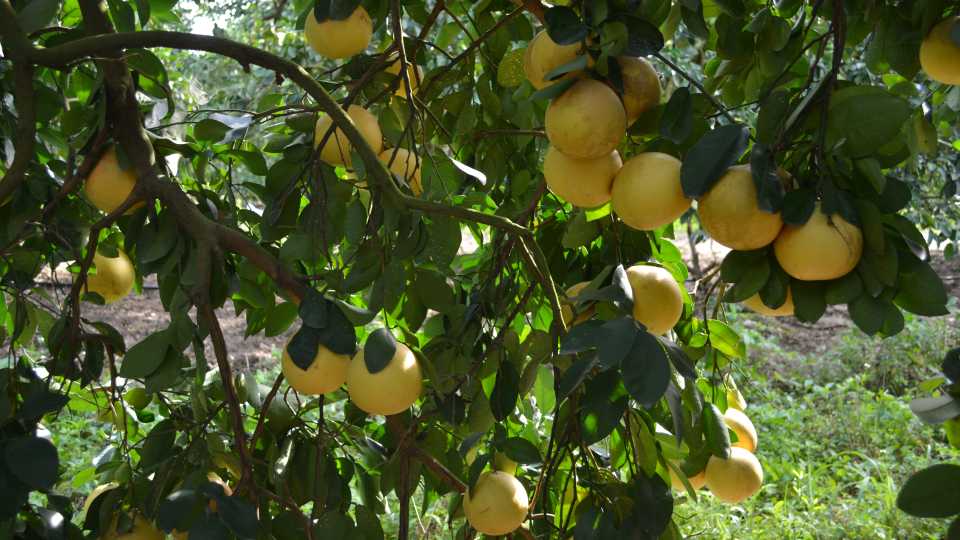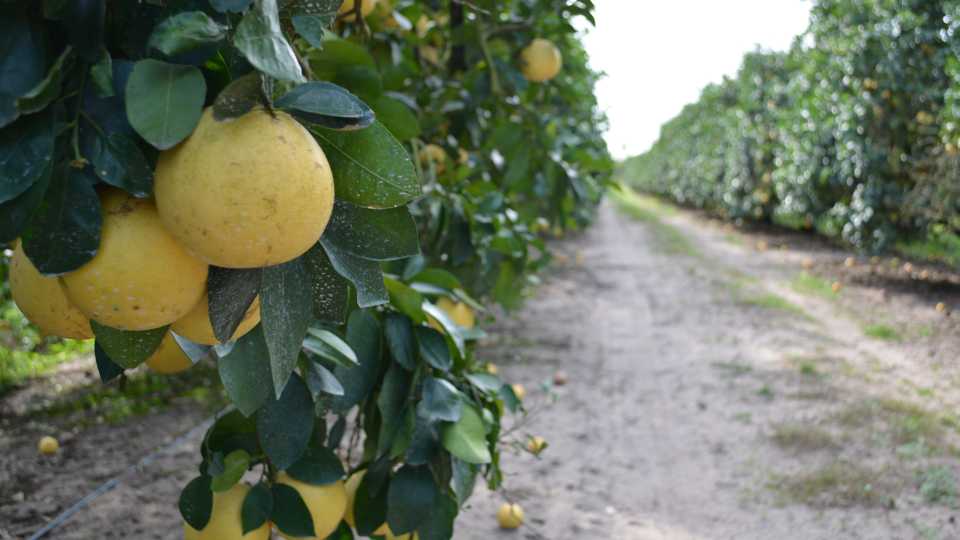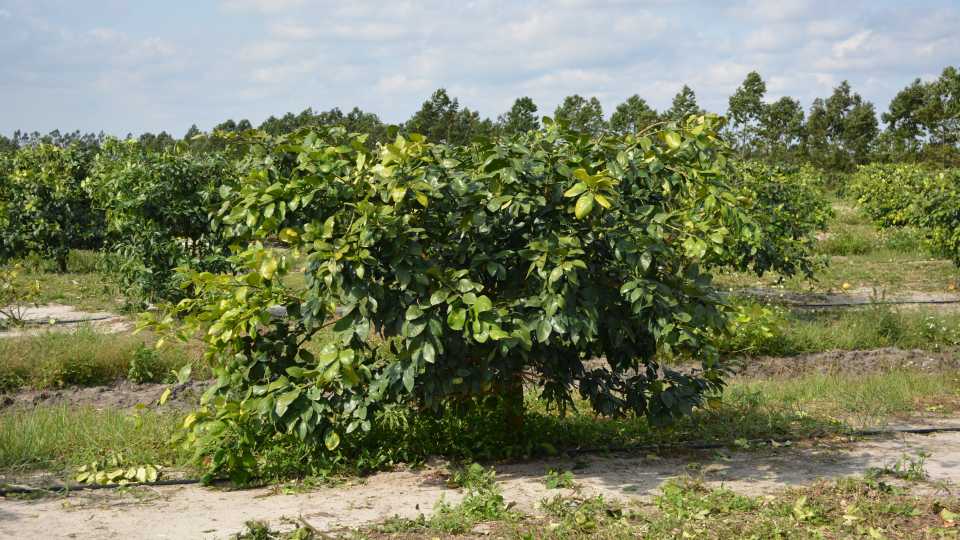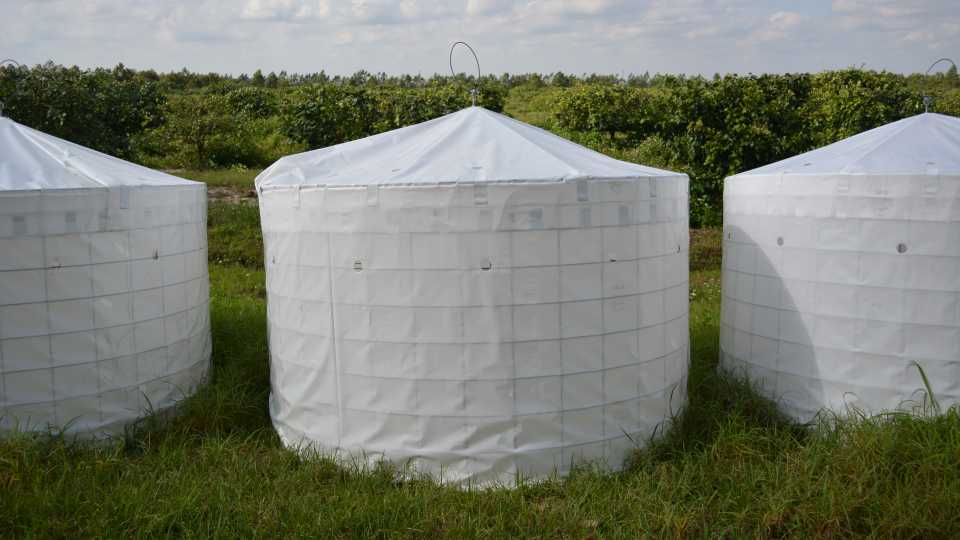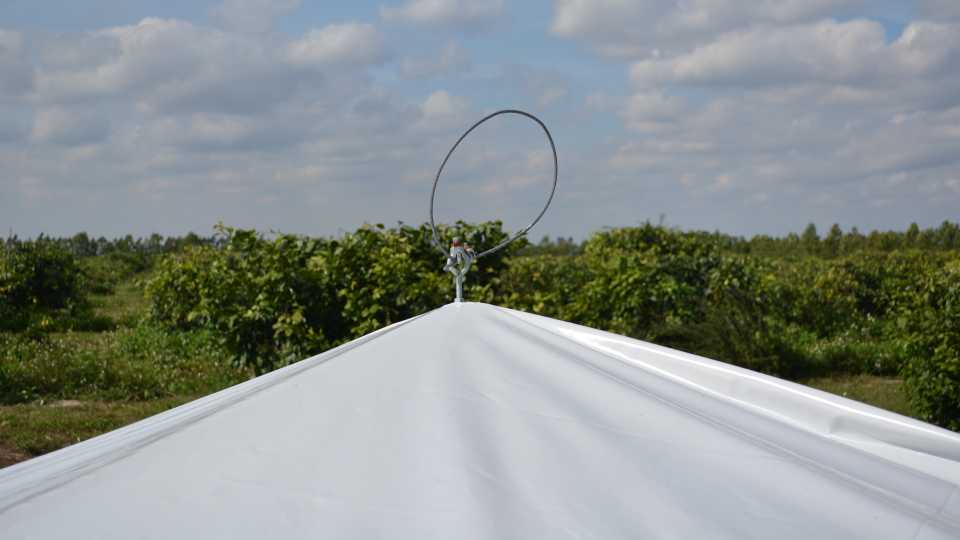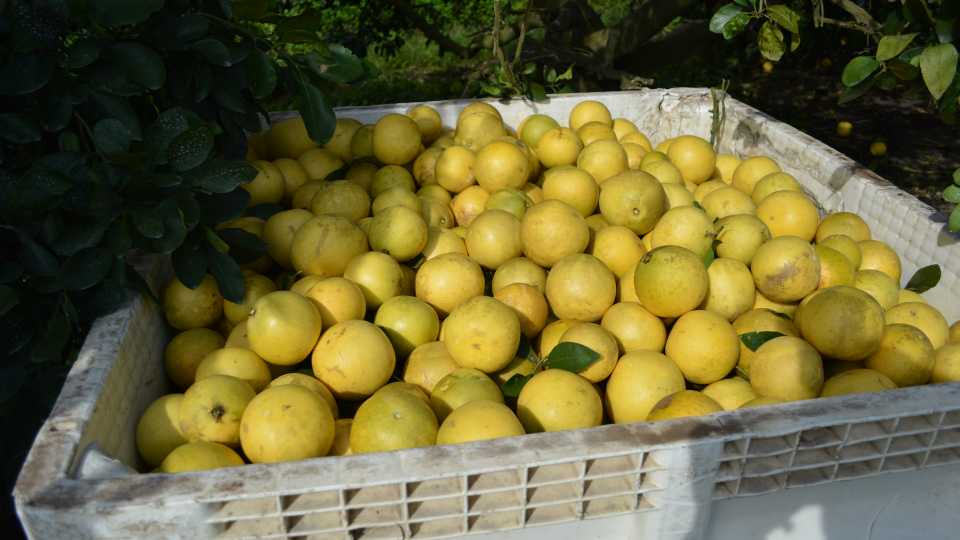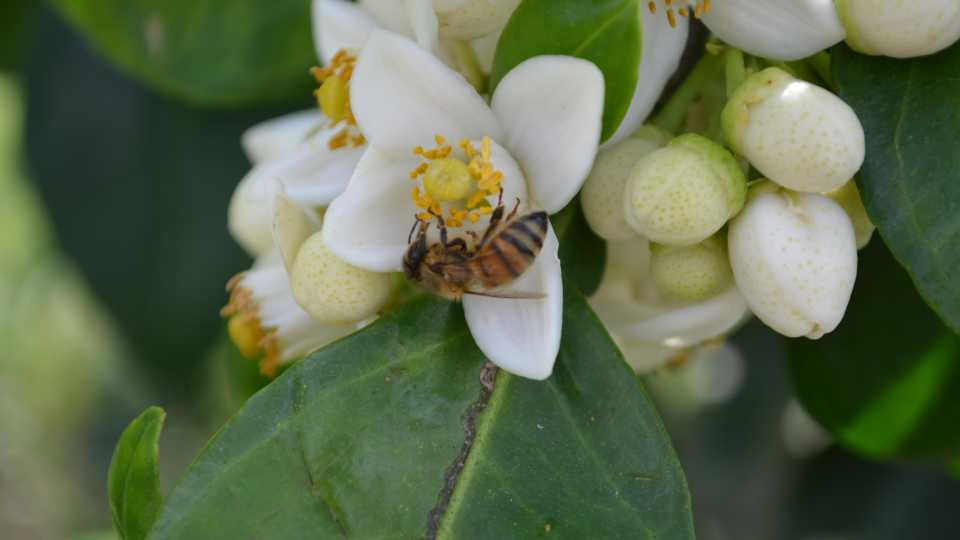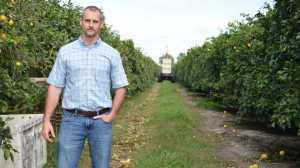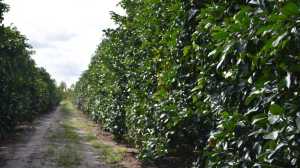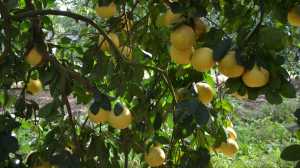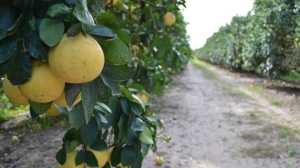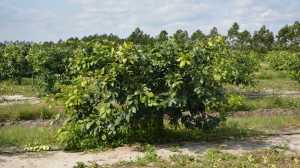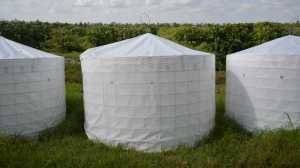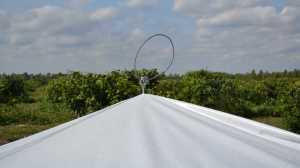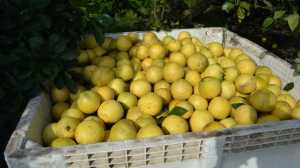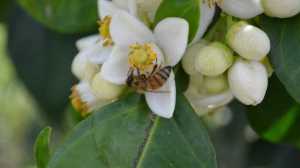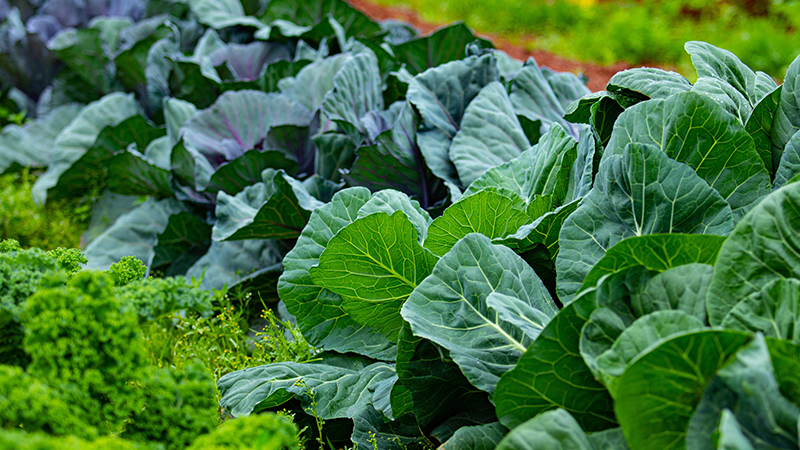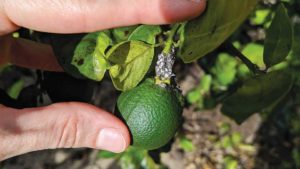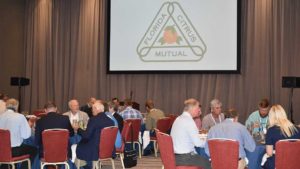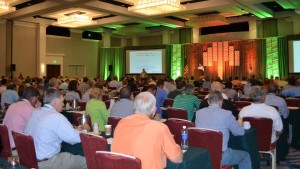Florida Citrus Grower Takes On Big Task Of Micro-Managing HLB
[blackoutgallery id=”70066″]
In the near decade now since HLB was confirmed in Florida, every season brought with it new learnings on dealing with the disease as it marched across the state. Growers who have applied this knowledge to their production systems have had some success in mitigating the effects of the disease.
Daniel Scott of Ft. Pierce-based Scott Citrus Management says growing citrus has become much more intense since HLB came along. The disease has impacted the management of the family’s grapefruit groves as well as the operations at their Riverfront Packing house.
“I think the biggest difference since greening is we are micro-managing every aspect of production now,” Scott says. “We are doing everything possible to keep these trees from going into stress. At one time, you could grow a good crop without paying so close attention to detail, but greening changed all that.”
Like others, Scott has added to or enhanced aspects of his production program to keep trees pumped up in the face of HLB.
“I can’t point to any one product or practice that is making the difference with greening,” he says. “But, if I were to take any one of those away, I believe the trees would suffer. Our production approach has become much more holistic.”
Nutrition Is Key
While some attention has shifted away from foliar nutrition in recent years, Scott says it remains a vital component of living with HLB. In addition, spoon feeding ground fertilizer is important to keep trees healthy and resilient as possible.
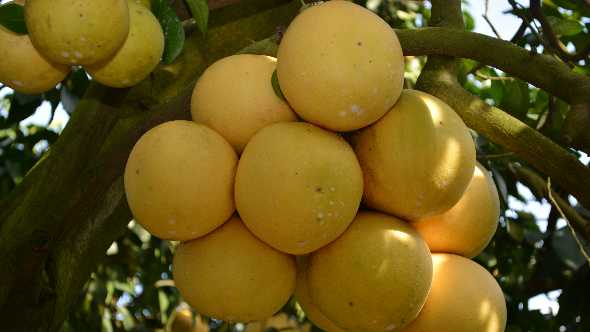
Photo by Frank Giles
“We are trying to spoon feed these trees with nutrition throughout the year,” Scott says. “It is different than 10 years ago when we would hit them with two or three big fertilizer applications and that would be it. Whether ground or foliar, we are now feeding these trees almost weekly.”
Ground fertilizer is going out increasingly in liquid form through the irrigation system.
“We are leaning more toward liquid, because we want the majority of it going in the root zone below the emitter,” Scott says. “We want these greening-comprised root zones getting doses of nutrition that they can actually absorb and benefit from. We still use dry fertilizer earlier in the year, and meter out the liquid throughout the year, along with the foliar nutrition.
“For grapefruit quality purposes, we used to never put out much fertilizer after June, but we have figured out ways to spread the nutrition throughout the year, which seems to be helping the trees and our quality.”
Scott says they have to be careful with their foliar applications because they are growing fresh fruit and need to avoid phototoxicity and burn.
“Everybody has their own foliar program,” he says “Throughout the year, we may rotate our N, P, K, and minors every other spray, and there may be 12 sprays during the year. Again, the idea is to spoon feed these trees, so they are never in need.”
Pound The Psyllids
Scott says psyllid control is an integral part of the holistic approach to dealing with HLB. The family groves participate in two areawide programs for psyllid control — the Orange Avenue Growers Association and the St. Johns Improvement District.
“It seems like psyllid management is constant now,” he says. “We are spraying well above and beyond the areawide sprays we are a participating in. In addition, we are concerned with leafminer, mites, and scale, which we make applications to control. There is a huge amount of management that goes into all this to be sure we are rotating effectively, staying on labels, and managing MRLs for our exports.”
Root Health Focused
Scott has placed increased emphasis on root health in recent years as knowledge grew that HLB has a devastating effect on the roots.
“Root health is a huge deal and we are monitoring it much more closely than in the past,” he says. “We are digging down to see when the root flushes are occurring. We are looking at feeder roots throughout the year to monitor for sloughing, and we are sampling a couple times per year for phytophthora.”
As part of the root health regime, Scott began acidifying irrigation water, and in some places, the soil.
“We started acidifying water last year on pretty much all our acres,” he says. “We had noticed our soil pH had been increasing in recent years, but hadn’t really tied that back to greening. But, then we started learning about the research of Dr. Jim Graham (UF/IFAS) and Brian Belcher (Davis Citrus Management) in this area and realized this is yet another management tool we need to embrace.
“In some places, we are working to bring down the pH in our soils. Once we get levels where we want them, we should be able to keep them there as long as we are acidifying the water.”
Acidifying the water and soil helps reduce bicarbonates, which can be very damaging to the root system, especially when combined with the effects of HLB.
The Heat Is On
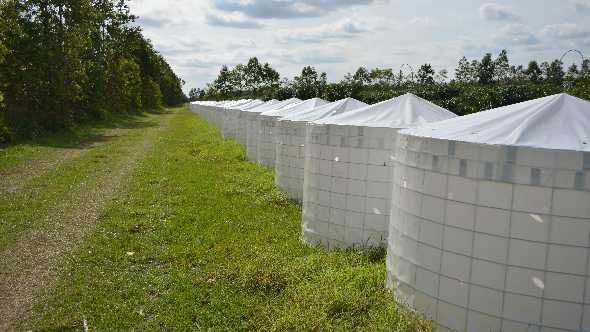
Photo by Frank Giles
Daniel Scott has been among the forerunners of growers who are putting thermotherapy to work in the grove. He has designed a simple round tent structure utilizing cattle fencing and nursery-grade poly film. The structures can be moved with a fruit loader, making the system workable with only one man moving the tents.
“Heat treatment works,” Scott says. “We have seen some pretty heavily infected trees turn around, but to cover a meaningful amount of acres with solar heat treatment is difficult.”
He believes an external heat source like steam to treat trees will be an important development to make the approach more viable on a larger scale.
Trimming Trouble
Another important cultural technique being applied to the Scott groves is hedging and topping trees to further balance the shoots with the roots.
“If you let these tops get bigger than the root systems can support, the canopy will start thinning and you will get dieback,” Scott says. “So we are cutting the tree tops back to keep them at a size these HLB compromised roots can support.”
On cutting, Scott says it all depends on how impacted trees appear to be by HLB.
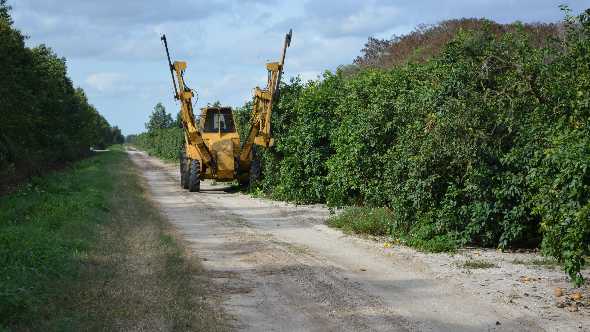
Photo by Frank Giles
“We will float the topper down the row and bring it down where we see more infected trees to trim that out,” he says. “When we see healthier trees, we will cut less. It is a judgment call. We are not just setting the topper at 12-feet and running across all the groves.”
A new management technique being experimented with this season is topping younger trees in the four-to six-year-old range, cutting out the tops of trees that show signs of HLB.
“The idea is to spur some growth in those trees by cutting in conjunction with a foliar program,” Scott says. “We force these trees to flush and stick more nutrition on healthy foliage and wood. This is something we would not have done a few years ago, but we always are trying new things in the face of greening.”
Planting For The Future
The family has been actively replanting for the past seven years. Every season, groves are evaluated and unproductive trees and areas are taken out and reset or solid set with new trees. Red and dark red grapefruit on sour orange rootstock make up the majority of plantings.
“We pay close attention to what the plant breeders are working on,” Scott says. “On the East Coast, sour orange has worked well for us, so we are sticking with it until something comes along and proves to be better.”
Scott says one of the bigger challenges growing in the presence of HLB is maintaining the health of the trees in the three-to seven-year-old range.
“Trees that age we are not only trying to maintain their health, but also we are asking them to double in size even if they are compromised by this disease,” he says “So, all of these management techniques become even more critical in this stage of growth.
“We have plenty of challenges with greening, but I am optimistic. I truly believe this industry is going to survive. It will be a changed industry, but those who remain will be much better growers.”





